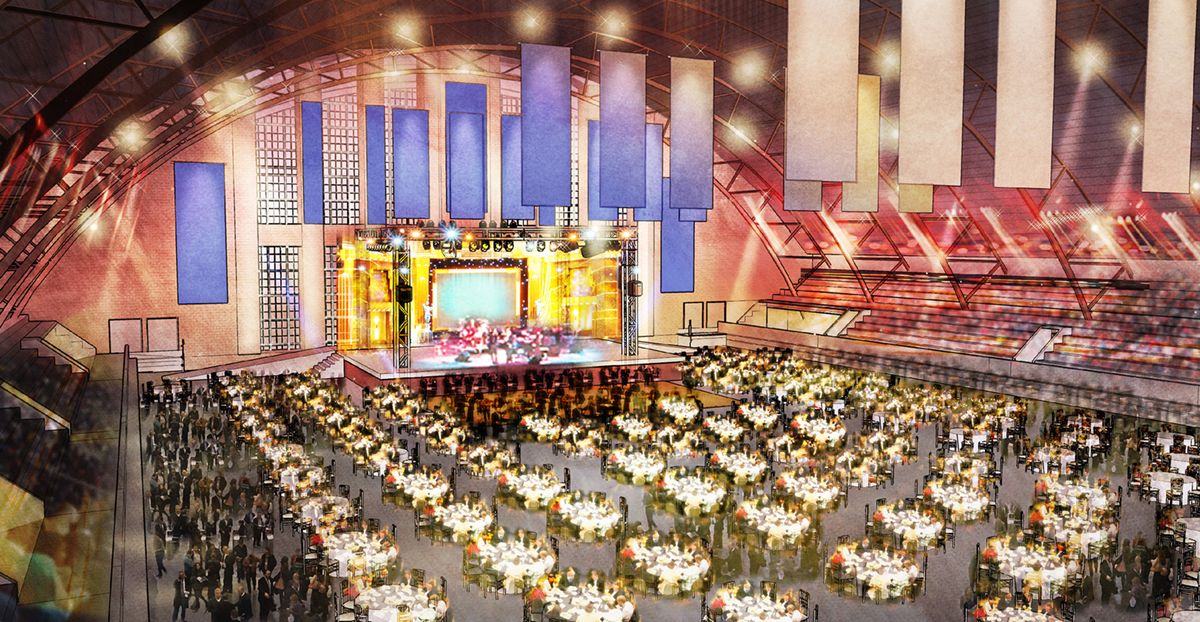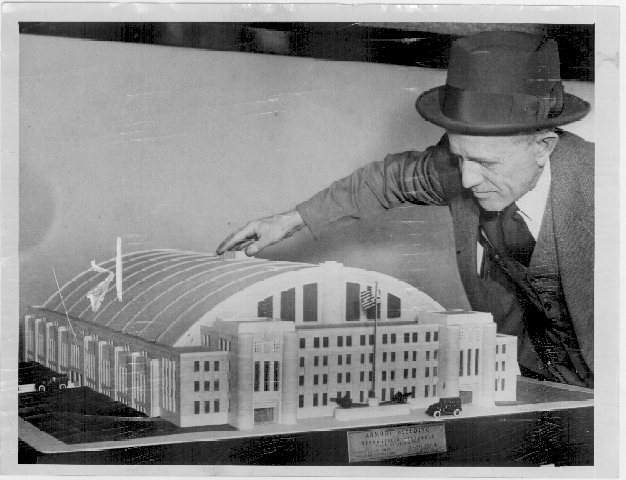The final days of the Minneapolis Lakers were not very distinguished. Before the Lakers moved to Los Angeles, the team played at a very small, but very striking facility: the downtown Minneapolis Armory, pressed into duty as an NBA arena.
In the big picture, of course, the team’s tenure at the Armory was a blip. For decades, since the WPA Moderne classic opened in 1935, it had been an important gathering ground in downtown Minneapolis, hosting larger events like political conventions, trade shows, concerts, boxing tournaments and more. The Lakers played there part time for more than a decade — when their Minneapolis Auditorium home was already booked — and played the final Minneapolis 1959-1960 season there before moving to Los Angeles.
As a cultural relic, the Amory is definitely worth saving. Even though the PWA and WPA designed and funded plenty of armories and fieldhouses across the county, this project was exceptionally noteworthy. It was a center of public life in the city, a noteworthy landmark that still stands out despite a slew of skyscrapers and other development going up in the area.
In recent years it’s been used as a parking ramp, passing through several different owners (including Hennepin County for a brief time) and being the subject of various redevelopment plans, including for use as a restaurant and a soundstage/musical production facility. As downtown develops, the Minneapolis Armory has turned into a hot property; it’s a block from two new Wells Fargo towers and two blocks from U.S. Bank Stadium, opening this fall as home of the Minnesota Vikings.
The current plan from developer Ned Abdul calls for the overhaul of the building to an events facility, as shown in the top rendering from Shea Design. And while Abdul has already begun some of the baseline repairs needed to keep the Armory going — roof and window patching and upgrades, removal of some bleachers — he’s also proposed some additions to the building that have raised red flags among local preservationists. As a result, the city of Minneapolis is stepping up its efforts to protect the Armory. The city’s Heritage Preservation Commission has requested interim protections, “to protect a nominated property from destruction or inappropriate alternation during the designation process.” It could take up to 18 months for the city to determine whether permanent protections are in order.
The issue is a familiar one in preservationist circles: preservation versus economic viability. Walking by the Armory and seeing it used for parking is a depressing situation — a formerly grand building is open to the elements, with no heed for its future. A noted developer has stepped in with a plan to restore the Armory to its former greatness, albeit with plans to alter it. It will be interesting to see where that fine line between preservation and economic viability is drawn by Minneapolis officials: there’s a lot of money involved thanks to the rapidly changing face of Downtown East, but there’s also a concerned group of preservationists who will surely fight any major changes to the 1935 classic.
Top image courtesy Shea Design; bottom image courtesy Minnesota Historical Society.



